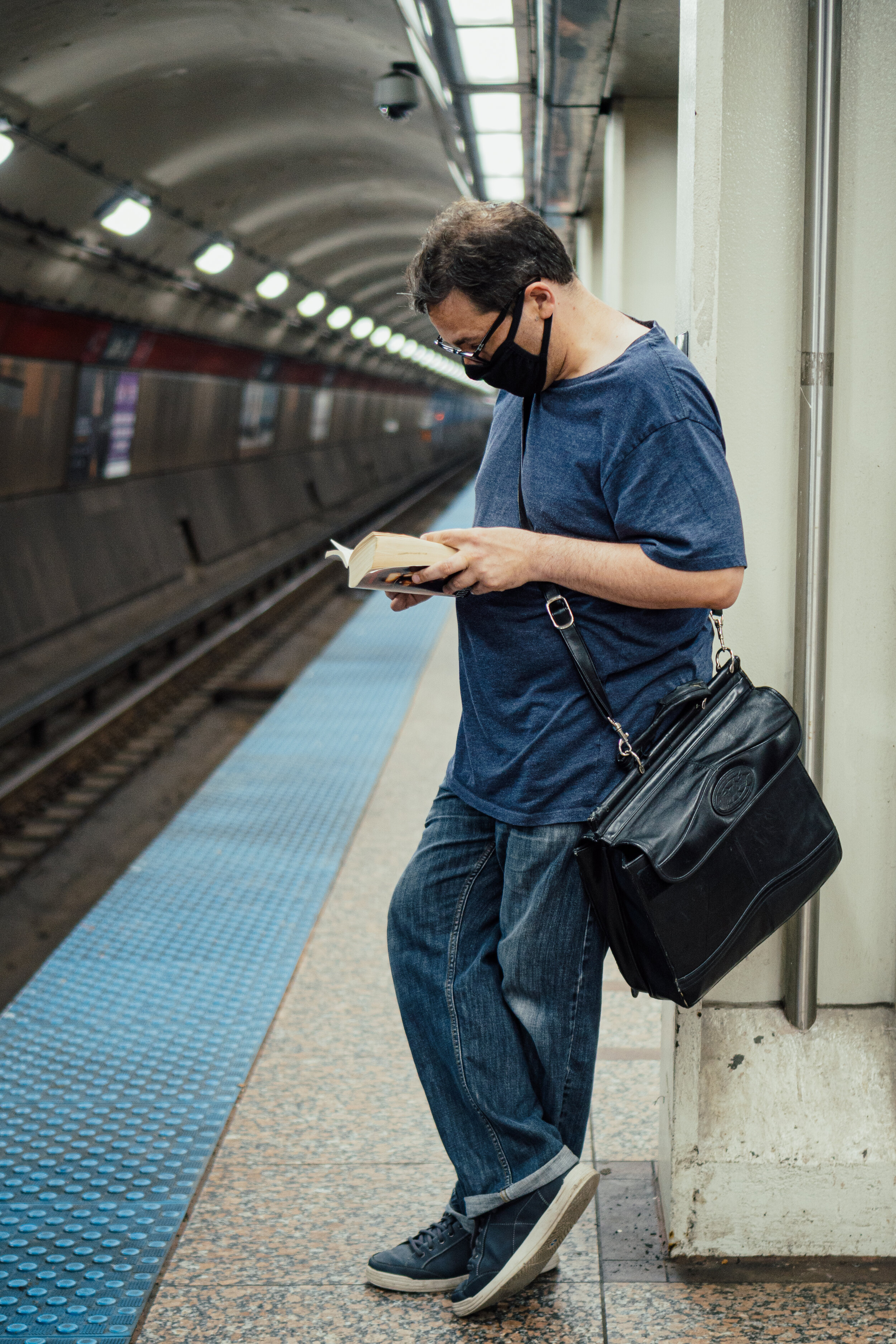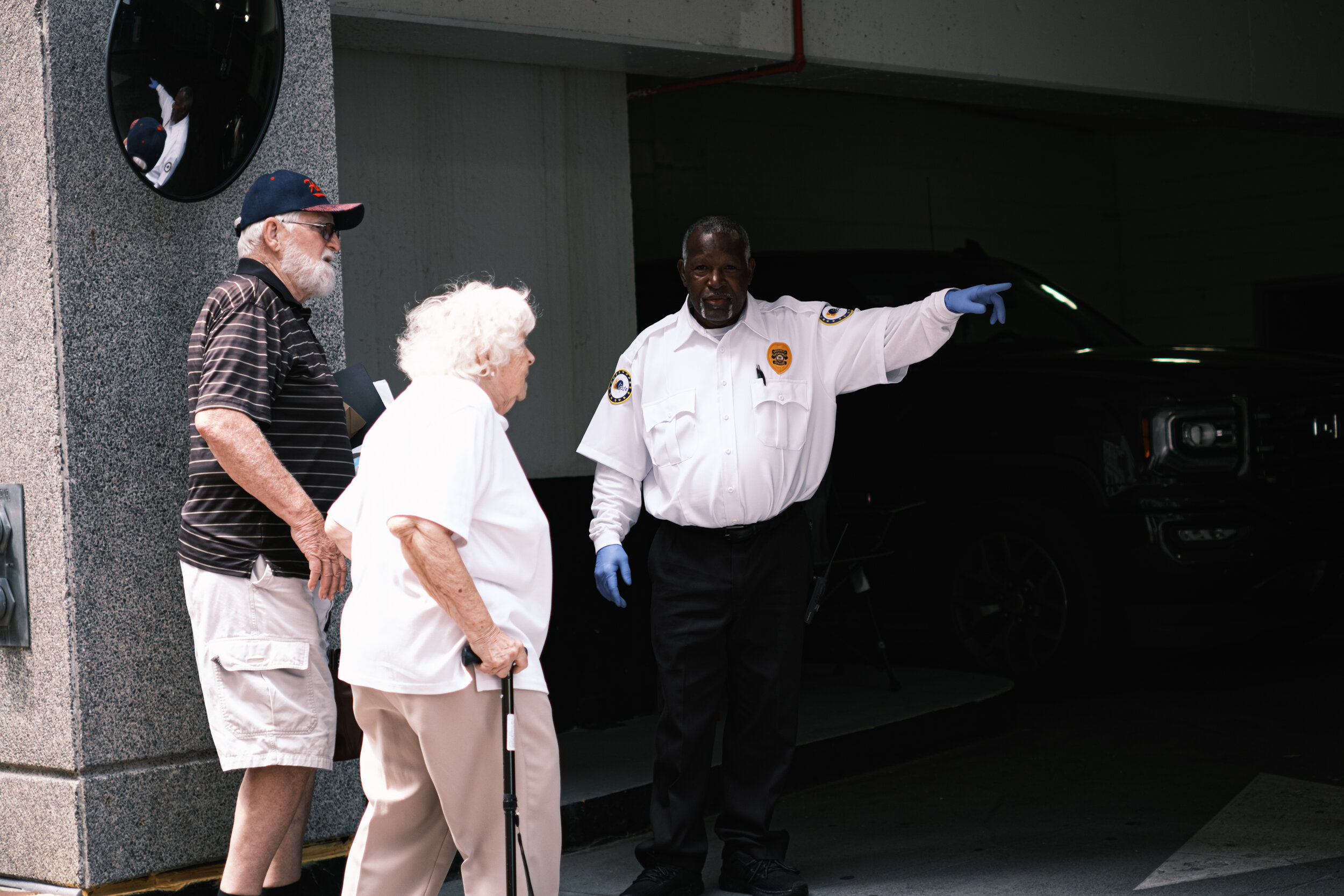Getting Schooled by COVID
It was a warm spring day in Philadelphia when I caught the bug. It was a few years ago now, long before viruses had even crossed my mind and “catching a bug” was just a silly phrase. I had taken a trip to the City of Brotherly Love after graduating college. Having just purchased my first camera, I was eager to see what I could do with it. I remember the moment like yesterday. While waiting for the bus to take me to my next tourist spot, I caught a glimpse of an interesting man out of the corner of my eye. His face was weathered like a well broken-baseball mitt. And his style! I had never seen someone dress like him. I won’t attempt to describe it in words; it’s something only a picture can illustrate.
At that moment I knew I wanted to take photos of people on the street. The concept that I could simply walkabout, open my eyes, encounter interesting people, and compose them in a provoking manner was mind-altering. Is the photo of the man in Philadelphia technically well-executed? I don’t think so. It’s not well-composed. I was very bashful, and so I used a long lens from a distance, instead of capturing the depth of his face up close. The image is one note, a monolith: an interesting man.
But that man was a gateway drug to an unexplored world of street photography.
Over the last few years, my style has evolved and changed as I’ve grown as a person and an artist. As I mentioned, I get closer to my subjects now. Who I find interesting to photograph has changed with my maturity. How I move about on the street has become a well-honed, but ever shifting dance. Street photography is a multi-faceted dialogue. The photographer is constantly having conversations, implicit and explicit, with their subjects, with others on the street, with the city, and with themself. Gaining more experience, “getting the reps”, and having those conversations has shaped how I shoot.
But nothing, however, has more fundamentally changed my photographic style than COVID-19. Stuck at home, I felt a dearth of creative energy. The street is where I felt comfortable, but now, we only spent time in the street if we absolutely had to. Downtowns become vacated overnight. The energy which once abounded sidewalks and cafes was drained. At first, I let this creative darkness consume me. I saw others creating amazing documentary work. Notably, National Geographic’s coverage of the pandemic was phenomenal. But I felt as listless as the streets. When it was safe, I returned to the streets. But I found few faces. And the faces I did see were obstructed by masks. How could someone who shoots photos of people continue to do so if there were no people?
I looked to my fellow creatives in the film photography space for inspirations. Many film photographers had perfected the art of transforming otherwise simple scenes of cars, buildings, and landscapes into wall-worthy images. I never before understood what they found compelling in lifeless scenes, until all scenes were lifeless. I began to understand and practice. Geometric patterns, the contrast of shadows, the warmth of light, leading lines and the time of day. These were all concepts I was familiar with, but because people were always my focus, I never really mastered them.
The tripod (mentioned below) was crucial is making this photo
My style changed. I took a craftsman’s approach and began refining the elements mentioned above: light, composition, geometric patterns, contrast, etc. These were foundational elements of photography that I had long overlooked. I searched inward as well and began photographing inside of my house and my neighborhood. I even did an entire project on the mailboxes in my neighborhood. I bought a tripod and a shutter release cable(two things I thought I’d never buy as they would be too cumbersome to lug around the street). These came in handy when was shooting longer exposures in lower light inside of my home. I also shot more film than I ever had before. Not only does film make you slow down and compose your shots more carefully (film ain’t cheap y’all), but it pushes you to understand the role light plays in your frame and how its presence or absence can affect an exposure.
As the streets regain their vibrancy and I begin taking more photos of faces, I hope what I have learned can be integrated into my portraiture. Below, I’ve included a gallery of the some of my most recent photos of faces. I am starting to see a definite shift in style from some of my earlier, pre-covid work. Enjoy!
New Work Gallery











